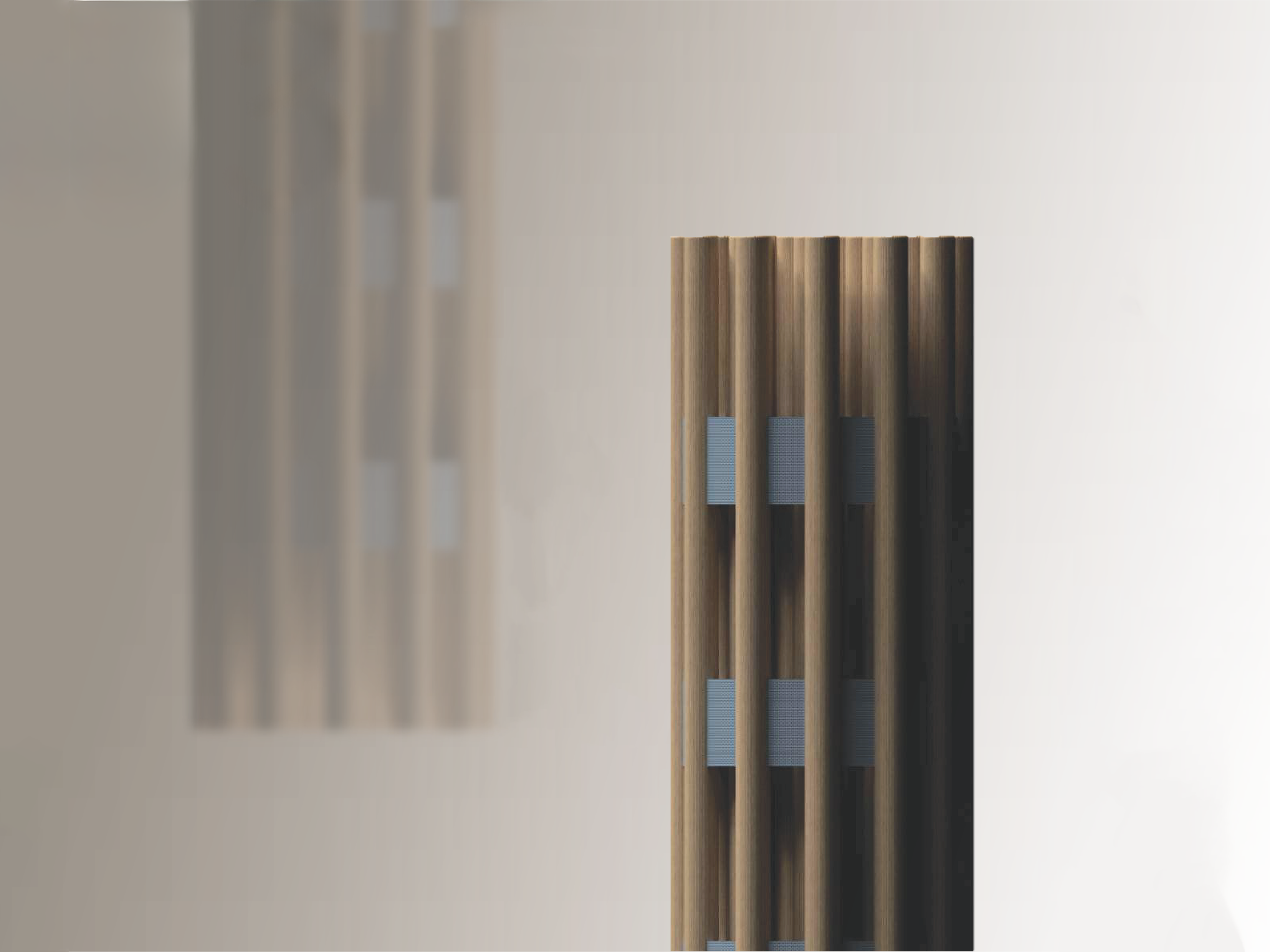Koko chair is a furniture piece inspired by a design classic - Thonet n.14, and modern production methods, such as bending of laminated wood. Through a thorough exploration of materials and forms, Koko chair, with subtle junctures, hidden construction, and recognisable aesthetic, was created.
While designing this chair, I wanted to create a piece that can be used in both private and public spaces, and respond to the requests of both use scenarios. The focus was on creating a chair that will be easy to assemble, with a minimalistic aesthetic, made special by the integrated details, such as leg and backrest connections, as well as the junctures between the seat and the front legs.
The hidden added construction helps to strengthen the structure of the chair, while allowing for a minimalistic aesthetic on the outside.
The front legs are tucked under the seat, and connected to the strengtheners seamlessly from the inside of the construction. Additional stiffeners are added at the front and the back of the seat.
The connection between the backrest and the back legs is created by application of tubular rivets, which not only provide a powerful link between the two, but also serve as a recognisable aesthetic detail of the Koko chair.
When exploring the shape of the chair I created multiple iterations with foam boards until I reached my desired shape and dimension. After that I explored types of junctures, and concluded on the final aesthetic of the chair. After this initial prototyping, I started creating the chair out of wood. The legs of the chair were made from laminated wood, which was placed on moulds, and bend accordingly. The bend legs were then connected to the base and the seat as well as with the backrest.
The guiding thought when designing Koko chair was 'Less is more'.





